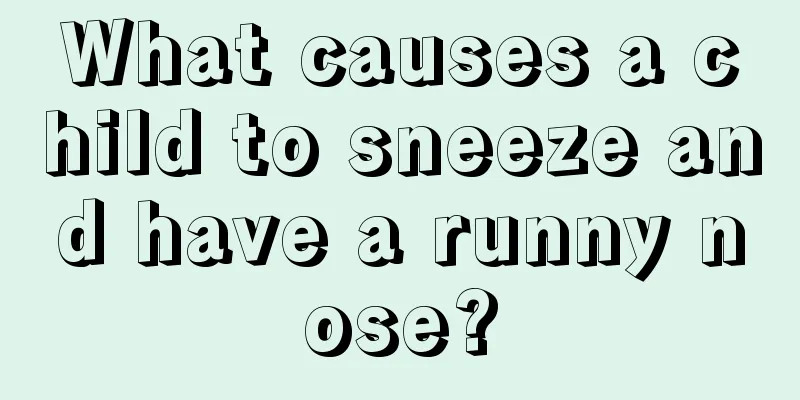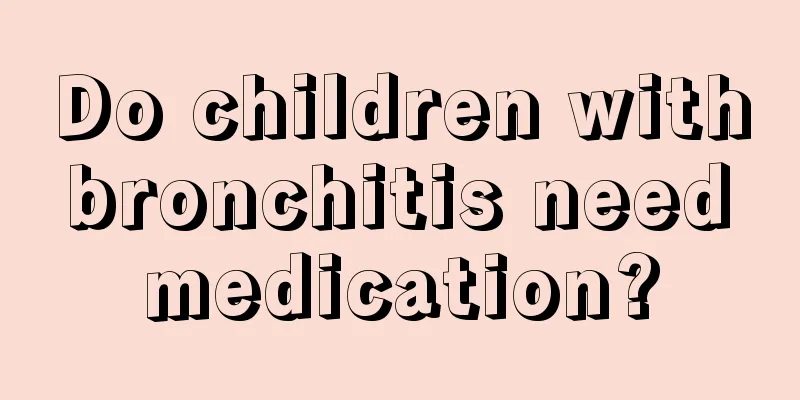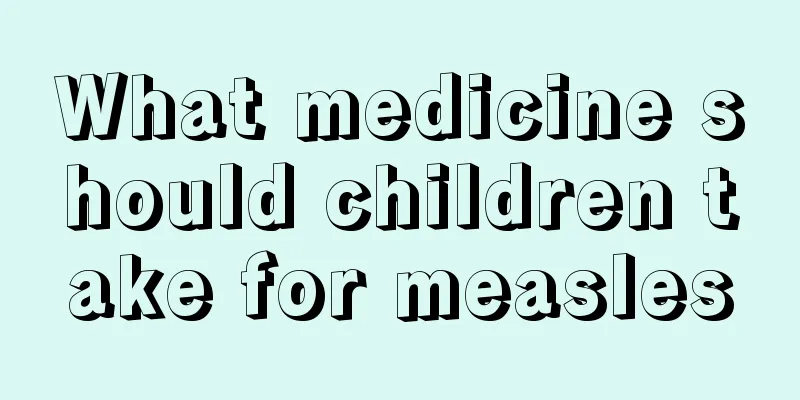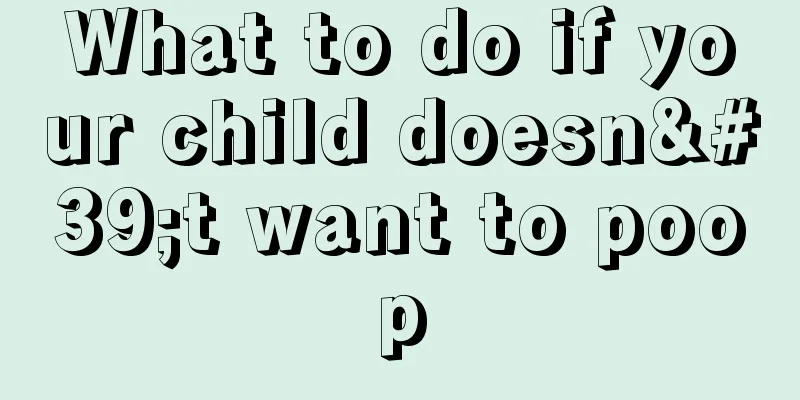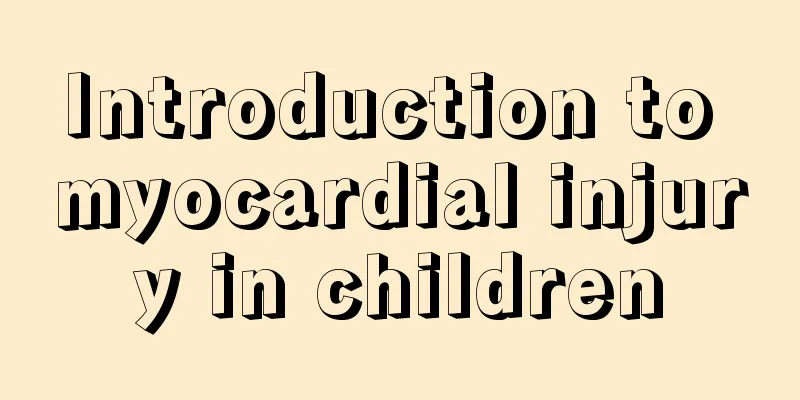Causes and treatments for a 40-degree fever in a child
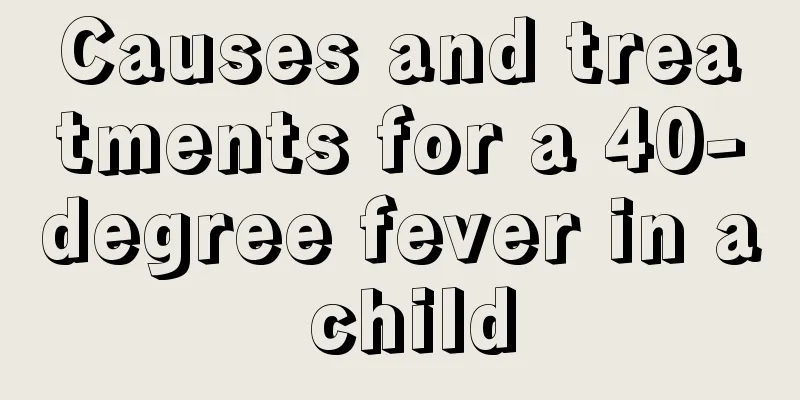
|
Next, we will introduce to you the causes and methods of reducing fever when a child has a fever of 40 degrees. In fact, we need to pay attention to many things. When a child's fever reaches 40 degrees, we all know that this is a very dangerous signal. The editor hopes that you parents must understand these situations very well. Then the editor would like to introduce some substantial opinions and suggestions to you, so let's take a look! one. Etiology and pathogenesis 1. Fever caused by external factors Children's internal organs are delicate, their physical form and Qi are not fully developed, their skin is thin, and their defenses are not strong. When the climate changes, the temperature is abnormal, or when there is inadequate care, exogenous pathogens take advantage of the situation to attack the surface, and the Wei Yang is depressed, causing exogenous fever. 2. Lung and stomach heat Improper treatment of external infection or internal injury from milk and food can lead to congestion in the lungs and stomach, which turns into heat. The accumulated heat then penetrates into the skin and becomes heat in the lungs and stomach. 3. Yin deficiency fever Children are born with inadequate endowment, liver and kidney yin deficiency, or they are malnourished after birth, or their yin is damaged by long-term illness, which leads to loss of yin fluid and endogenous heat. two. Clinical manifestations 1. Fever caused by external factors Wind-cold patients have mild fever, severe aversion to cold, headache, no sweating, nasal congestion and runny nose, sneezing, itchy throat, thin white fur, and bright red fingerprints; Wind-heat symptoms include severe fever, aversion to wind, slight sweating, yellow or turbid nasal discharge, dry mouth, sore throat, thin yellow tongue coating, and red and purple fingerprints. 2. Lung and stomach heat: High fever, flushed face, irritability, shortness of breath, loss of appetite, thirst and desire to drink, constipation and yellow urine, red tongue with dry coating, and dark purple fingerprints. 3. Yin deficiency fever: Fever in the afternoon, hot palms and soles, night sweats, thin body, loss of appetite, restlessness and insomnia, little or no tongue coating, weak and rapid pulse, and light purple fingerprints. 3. Drug-induced fever Common antipyretics include liquid, tablets, suppositories and injections, each of which has different principles of use: ●Aqueous preparations are milder, and the most commonly used are syrups containing paracetamol, such as children's Motrin syrup and children's Paracetamol drops. ●Aspirin tablets are effective in reducing fever. However, aspirin may trigger Reye's syndrome, so it should not be used during certain periods of time, such as when your baby has chickenpox or the flu. ● Suppositories are medicines inserted into the anus. They are mainly absorbed by the rectum and have a relatively quick effect. If your child refuses to take oral medications, antipyretic suppositories are the best option. When using it, it is better to use less so that the fever will subside more slowly than to use a large amount. If used intensively, it is easy to reduce fever excessively, which will not only cause a sharp drop in body temperature, but also cause diarrhea in the baby after the drug repeatedly stimulates the anus. ●Injections are the least safe antipyretic drugs and are generally not recommended for use unless absolutely necessary. It is best not to use different antipyretic drugs together at random, because the dosage is difficult to control. It is safer to use them alone. Also, do not take antipyretic drugs more than once or increase the dosage to enhance the antipyretic effect. It is important to remember that "medicine is also poison". Any medicine (including antipyretics) has its specific uses, and taking too much will become toxic. Many parents, out of their love for their children, give their children too many antipyretics, but the fever does not go down, but gets worse, because one of the toxic reactions of antipyretics is to increase body temperature. This is the end of the introduction to the causes and methods of reducing fever in children with a fever of 40 degrees. We hope to give you better advice. Children in this situation are already in great danger. There are actually many things we need to pay attention to. The editor hopes that you as parents will remember some basic precautions and hope that your children will be healthy! |
<<: Fever in children and its treatment
>>: Fever standards and treatment recommendations for young children
Recommend
What's wrong with the baby's nose having mucus?
When a baby's nose is clogged with boogers, i...
There is a depression on the back of the baby's head. What's going on?
Babies are the flowers of the motherland and the ...
What’s going on if my baby’s tongue turns green?
The baby's physical health is extremely fragi...
How to effectively teach your baby to crawl
Many parents start helping their babies learn to ...
What to do if a 7-year-old child doesn't like to eat?
Nowadays we are particularly concerned about chil...
How to treat vulvar inflammation in children?
Vulvitis is a common gynecological disease. Most ...
What to do if a four-year-old child keeps coughing
A four-year-old baby's body resistance is sti...
Does MRI have any effect on children?
When it comes to MRI examinations, people usually...
Reasons for children sweating while sleeping
Children sweating while sleeping is a problem tha...
How to solve the problem of baby coughing for half a month
Baby coughing is very common in life, and there a...
What are the symptoms of zinc deficiency in children?
Parents are very concerned about their children&#...
Three-year-old child has bad mouth
Don’t think that bad breath is a phenomenon that ...
How many times a day should a 50-day-old baby poop?
After birth, newborns will defecate almost every ...
How to cook rush for children to drink
Rush is a traditional Chinese medicine, mainly us...
Hand eczema in children
Hand eczema is actually not common, and its cause...

